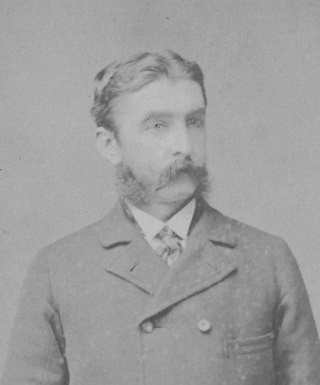Related Research Articles

The 1881 New Zealand general election was held on 8 and 9 December in the Māori and European electorates, respectively, to elect 95 MPs to the 8th session of the New Zealand Parliament.
Ashley was a New Zealand electorate situated north of Christchurch. It was in use from 1866 to 1902, and was replaced with the Hurunui electorate.
Sydenham was a New Zealand parliamentary electorate, from 1881 to 1890 and again from 1946 to 1996. It had notable politicians representing it like Mabel Howard, Norman Kirk and Jim Anderton.
Christchurch North is a former New Zealand parliamentary electorate. The electorate comprised the northern half of what is now considered the Christchurch Central City.
Lyttelton is a former New Zealand parliamentary electorate. It existed from 1853 to 1890, and again from 1893 to 1996, when it was replaced by the Banks Peninsula electorate.
Peninsula was an Otago electorate in the New Zealand Parliament from 1881 to 1893, based on the Otago Peninsula.
Moeraki was a parliamentary electorate in the Otago region of New Zealand, from 1881 to 1887.
Geraldine was a former parliamentary electorate in the South Canterbury region of New Zealand that existed three times from 1875 to 1911. It was represented by six Members of Parliament.
Wairau was a parliamentary electorate in the Marlborough Region of New Zealand. It was one of the initial 24 New Zealand electorates and existed from 1853 until its abolition in 1938, when it was succeeded by the Marlborough electorate. The electorate had 13 representatives during its existence. The 1861 election in the Wairau electorate was notable in that a later Premier, Frederick Weld, was unexpectedly and narrowly defeated by William Henry Eyes.
Wakanui was a rural parliamentary electorate in the south Canterbury region of New Zealand, from 1881 to 1887.
Lincoln was a parliamentary electorate in the Canterbury region of New Zealand from 1881 to 1890. It was represented by two Members of Parliament.
Christchurch was a parliamentary electorate in Christchurch, New Zealand. It existed three times. Originally it was the Town of Christchurch from 1853 to 1860. From the 1860–1861 election to the 1871 election, it existed as City of Christchurch. It then existed from the 1875–1876 election until the 1881 election. The last period was from the 1890 election to the 1905 election. Since the 1946 election, a similarly named electorate called Christchurch Central has been in existence.
St Albans was a parliamentary electorate in Christchurch, New Zealand, from 1881 to 1890, then from 1946 to 1996.
Hokonui was a parliamentary electorate in the Southland region of New Zealand, from 1881 to 1890.
City of Dunedin, during the first two parliaments called Town of Dunedin, was a parliamentary electorate in Dunedin in Otago, New Zealand. It was one of the original electorates created in 1853 and existed, with two breaks, until 1905. The first break, from 1862 to 1866, was caused by an influx of people through the Otago gold rush, when many new electorates were formed in Otago. The second break occurred from 1881 to 1890. It was the only New Zealand electorate that was created as a single-member, two-member and three member electorate.
Christchurch South was a parliamentary electorate in the city of Christchurch, New Zealand, from 1881 to 1890 and then from 1905 to 1946.
Franklin North was a parliamentary electorate in the southern part of the Auckland Region of New Zealand from 1881 to 1890.

Edward Richardson was a New Zealand civil and mechanical engineer, and Member of Parliament. Born in England, he emigrated to Australia and continued there as a railway engineer. Having become a partner in a contracting firm, a large project caused him to move to Christchurch in New Zealand, in which country he lived for the rest of his life.

Walter Hippolyte Pilliet JP was a 19th-century Member of Parliament in Christchurch, New Zealand. He worked initially as a surveyor and was then resident magistrate in several places. He was a newspaper editor and was represented in Parliament for one term.
The 8th New Zealand Parliament was a term of the New Zealand Parliament.
References
- McRobie, Alan (1989). Electoral Atlas of New Zealand. Wellington: GP Books. ISBN 0-477-01384-8.
- Wilson, James Oakley (1985) [First published in 1913]. New Zealand Parliamentary Record, 1840–1984 (4th ed.). Wellington: V.R. Ward, Govt. Printer. OCLC 154283103.